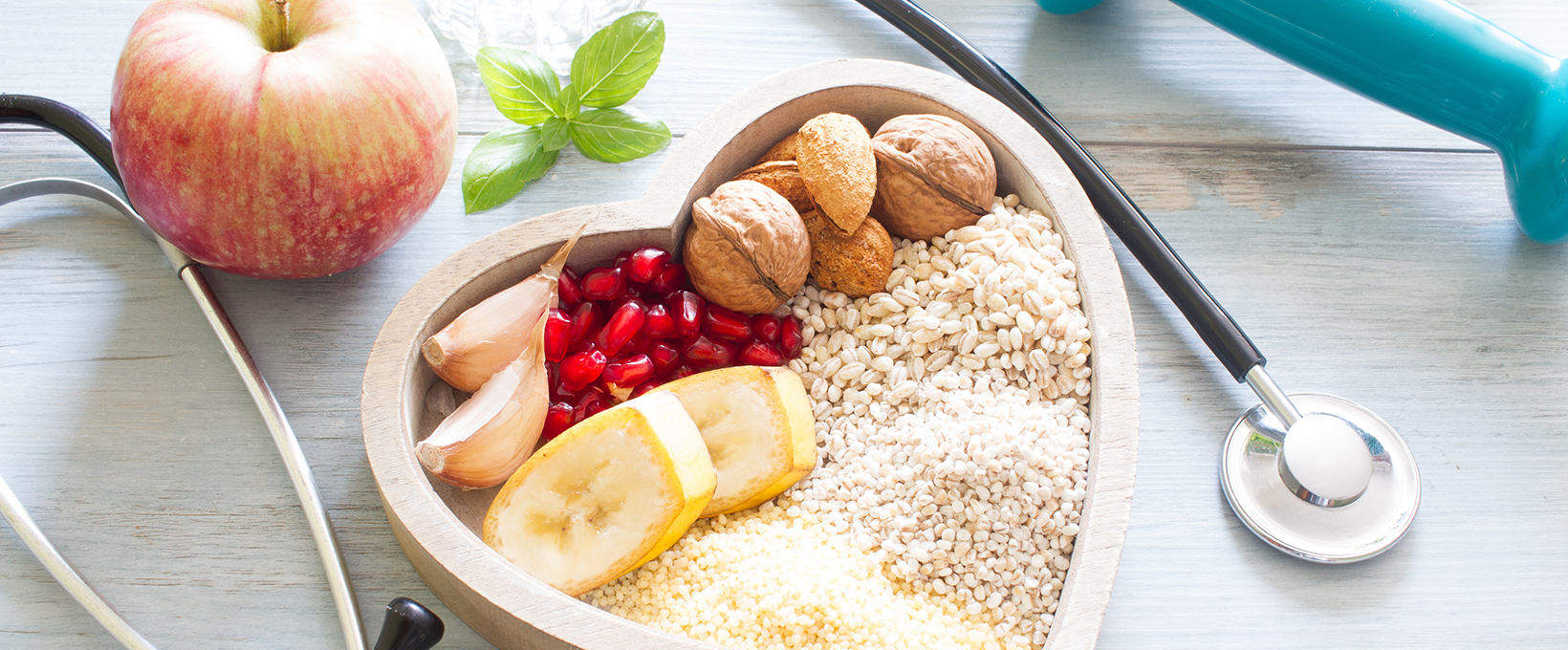
It’s February! Celebrate Heart Health Month!
According to the Centers for Disease Control and Prevention, heart disease is the leading cause of death in the United States. But the good news is that we can prevent heart disease with proper exercise and eating.
This month and year-round, follow these tips for both fitness and nutrition to have a heathy heart!
Fitness Tips
- Get moving. Physical activity is essential. The American Heart Association recommends 150 minutes of moderate aerobic activity or 75 minutes of vigorous aerobic activity per week, plus two days of moderate-to-high intensity muscle-strengthening per week. Thirty minutes a day, five days a week, is a good goal!
- Know the levels. It can be confusing to understand what moderate exercise is and what’s intense. Moderate exercise includes activities such as brisk walking, bicycling less than 10 mph, and water aerobics. Vigorous exercise includes running, bicycling more than 10 mph, and swimming laps. A simple way of measuring your level of activity is to determine your ability to hold a conversation during exercise. During light activity, conversation should be easy, but during intense exercise, it should be difficult.
- Get your heart pumping! In order to have a healthy heart, you must increase your heart rate! The easiest way to determine your maximum heart rate is to subtract your age from 220. To determine your heart rate during exercise, find your pulse, count for 10 seconds, and multiply that number by 6 to determine your beats per minute. During moderate physical activity, your heart rate should be 50% to 69% of your maximum heart rate. During vigorous activity your heart rate should be 70% to 90% of your maximum heart rate. A YMCA certified personal trainer can help you identify and reach these levels!
- Do what you enjoy. Regular exercise is easier when you do exercises you enjoy doing. group classes, playing pickle ball, or swimming counts!
Nutrition
- Figure out the fats. Fat is good for you and important to an overall healthy diet. But this means focusing on the good fats and adding them in moderation to your meals and snacks. Good fats include Omega-3 fats, which can be found in chia seeds, olive or canola oils, and flaxseeds, and mono-unsaturated fats found in avocados, natural peanut butter, salmon, albacore tuna, sardines, and mackerel. The fats you want to avoid and reduce are trans fats and saturated fats. This means cutting down on fried foods, cakes, cookies, and fatty meats.
- Don’t pass the salt. The American Heart Association recommends no more than 2,300 mgs of sodium a day. Reduce your intake by looking for “no salt added” or “low sodium” foods.
- Find the fiber. Increase your whole grains, vegetables, and fruits. When shopping for breads and cereals, make sure the first ingredient listed is whole grain, such as “100% whole wheat.” Try whole grain cereal like oatmeal, and try new grains such as quinoa, brown rice, barley. To make sure you’re getting enough vegetables, aim to fill half your meal plate with dark, leafy greens like spinach, collard greens, and kale. At the grocery store, look for fresh vegetables and fruits that are in season or frozen vegetables without sauces or butter.
- Do dairy smart. Seek out low-fat versions of milk, cheese, yogurt, and kefir. Also, try other sources of calcium including calcium-fortified soy or nut milks.
- Keep protein lean. Choose unsalted nuts and seeds, eggs or egg substitutes, beans, lentils, peas, lean cuts of meat, or tofu or tempeh.
Following these tips will help keep your heart in great shape this February and throughout the year. For more information and ongoing encouragement, talk to a YMCA certified personal trainer.
Happy Heart Health Month!